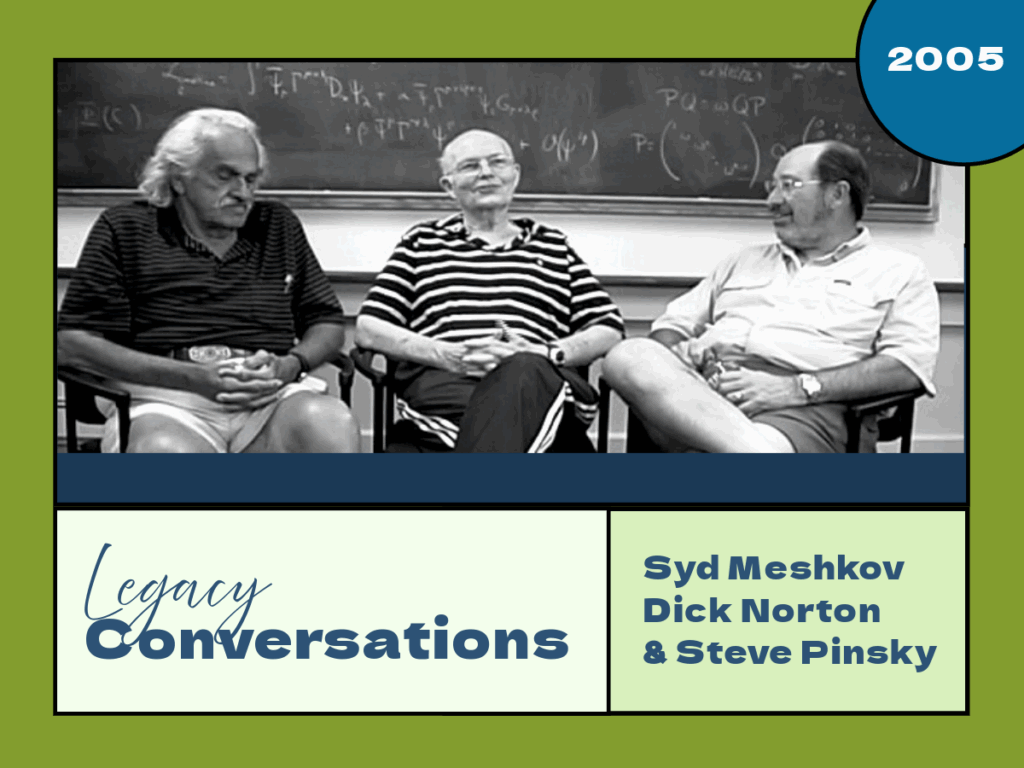In 1957 I theorized that if a guy with three kids going to graduate school in Pittsburgh on the GI Bill could rent a house plus jeep in Aspen for three summer months at $400, he’d be a damn fool for not getting outta town. Part of the theory was that, since paper and pencil are the same in Aspen as Pittsburgh and Aspen a nicer environment, my work in theory would improve with this arrangement. This theory and practice were repeated 1958 and 59.
I remember a mid–afternoon moment in 1959 in the shed I claimed as my study. I stared at my paper and it was empty, I heard trout rising in the Roaring Fork below and knew which would soon win my attention and action, and thought, “I cannot do physics alone, I have to have someone to talk to.”
I remember an evening several weeks later, sitting after dinner at the Caudills. Their solution had been simple; invite Bob Craig over for dinner, explain the problem, and ask the Institute to add some kind of physics think–tank to its programs. He sat on the floor, rocking, and said, “That’s a good idea, I’ll take it upstairs.”
Then, several weeks later, I remember a sauna with Craig and R.O. Anderson. Paepcke is ill now, and power is finding its way into different hands. R.O. declares, “We can have a Physics Division of the Aspen Institute, that’s winnable. What title do we have to give you at the Division?”
A few days later Craig and I are standing at the corner of N. 6th and Gillespie, between Vivian Goodnough’s riding school and Tiedman’s Coal. He says, “Here is your place,” although I can’t hear him above Vivian’s bombast of instruction to her students and horses. Next, at a basement classroom at Carnegie Mellon, I explain these things to Prof. Michel Baranger. He says, “You have to meet Michael Cohen. He has crazy ideas like this that he wants to try at Los Alamos.” I don’t remember the date, but it is a sunny and bright meeting room at the Pittsburgh airport. The work is divided roughly as: Craig, relationships with the Institute and access to Washington funding; Cohen would recruit physicists; how many? We agreed that twenty was a critical mass. I would take care of funding and construction of the building. Naifs? Yes, but stubborn too.
A meeting back in Aspen to firm up architectural and construction details. Thinking that we will be talking conceptually about the building itself I have brought my pal, the architect Sam Caudill. The Institute points out that a building “belongs” to the entity that owns the land underneath; this is to be the Physics Division of the Aspen Institute on land that belongs to the Institute. Herbert Bayer will design the building that I committed to pay for and construct; I am there only as a matter of courtesy. Sam and I walk out. Bayer designs a stone monastery, budget $280,000. I shake that off and he designs the current cement block structure, budget $80,000.
I remember planning to offer our participants to a little program to supplement and bring our scientific expertise to the Executive Seminar. Mortimer Adler would ask for eight seminar volunteers to do an extra–credit session with the physicists on “What is the nature of reality” – there would be no readings. We provided four of our own, and Mortimer facilitated the discussion. It soon became evident that Mortimer would defend the proposition that “While physicists may understand atoms, only a philosopher could know how atoms relate to reality,” and he would dazzle the audience by how quickly he could bring the physicists into tongue–tied submission. We lost our innocence there on the question of whether thoughtful citizens would enjoy a philosophical debate or just learn a little bit more about how atoms work.



